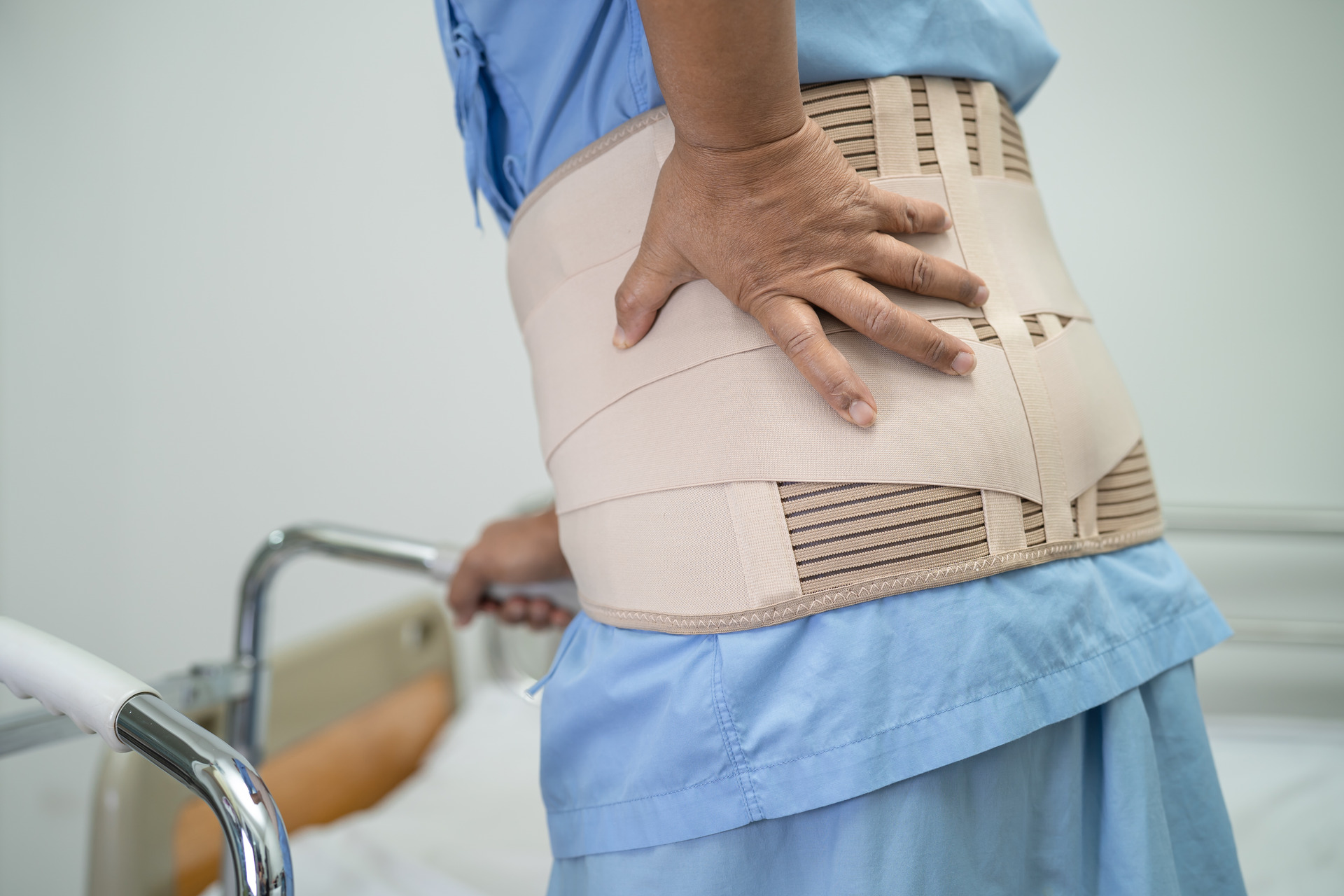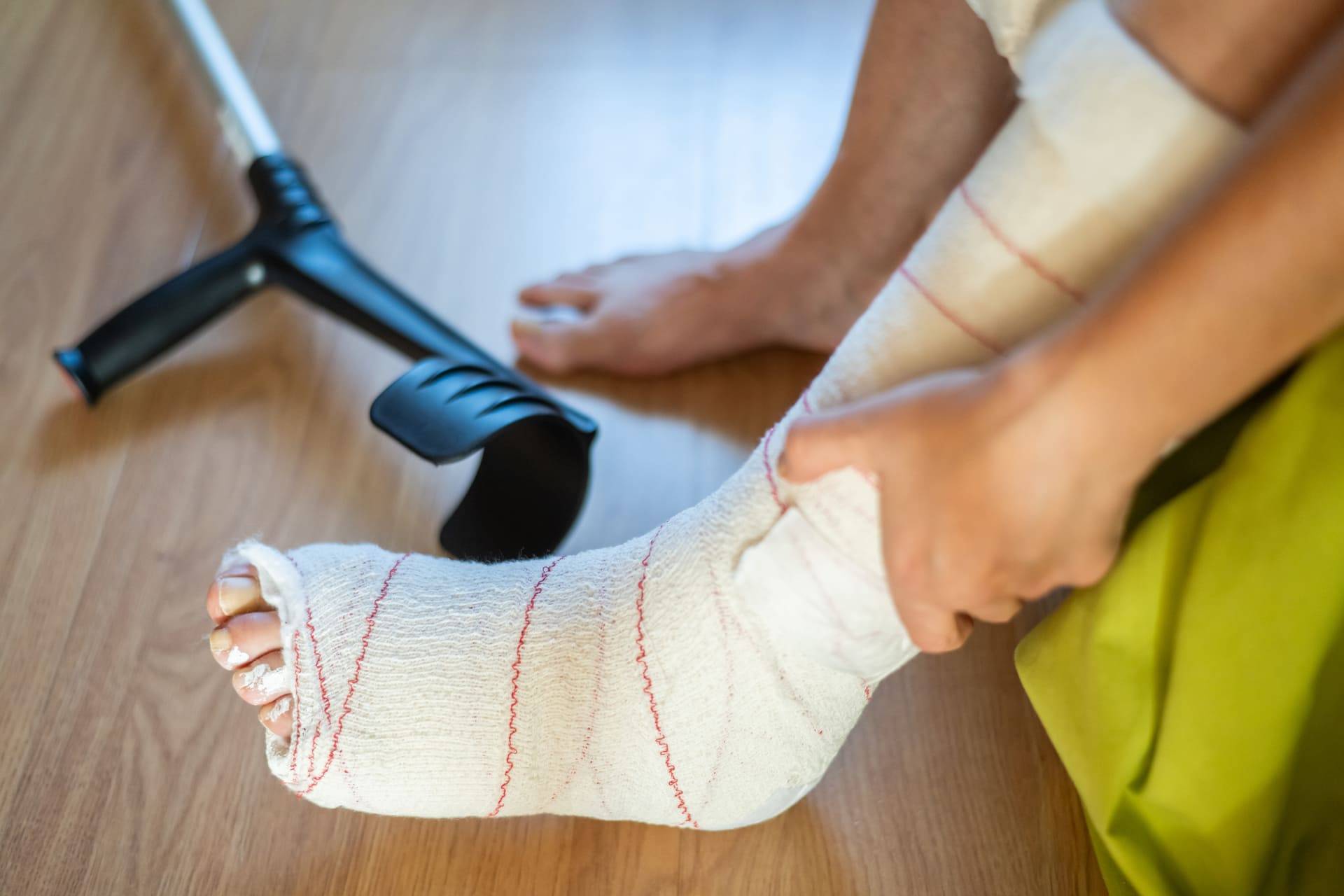Spinal Injury Compensation Payouts in California

Average spinal injury compensation payouts in California are:
- Minor: $50,000 to $150,000
- Moderate: $150,000 to $500,000
- Severe: $500,000 to $3,000,000
The exact amount of compensation depends on several factors, which can significantly impact the final settlement:
- Long-term impact of disability
- Life-threatening or permanent injuries
- Cost of medical treatment
- Spinal injections
- Physical rehabilitation therapy
- Insurer’s policies
- Loss of earning capacity
- State law
Do You Have Grounds for a Spinal Injury Compensation Claim?
If you’ve suffered a spinal cord injury in an accident, you may have grounds to pursue a compensation claim in California. To determine eligibility, there are two priority criteria you must meet:
- Injury From the Accident: The injury must be directly result from the accident in question. Gathering documentation, such as medical records and accident reports, is vital to establish a clear connection between the crash and your spinal injury.
- Statute of Limitations: In California, there is a strict statute of limitations for personal injury claims, generally two years from the date of the injury. You must file your claim within this timeframe to preserve your right to pursue compensation. Acting promptly is vital, as delays may affect your case’s eligibility and strength.
At Feher Law Firm, we understand that every spinal injury case is unique, and we’re here to help you determine if you have a valid claim. With our no-obligation free consultation, we discuss your situation in more detail, and our experienced team can offer personalized guidance and clarify your legal options moving forward.
Additional reading: herniated disc from car accident settlement
Reach out to a California spine injury lawyer for further guidance on pursuing a spinal injury settlement in California
Traumatic scoliosis settlement
A traumatic scoliosis injury settlement in California typically ranges from $75,000 to $300,000. The amount aims to cover medical expenses, lost wages, and compensation for pain and suffering.
However, each settlement is determined by multiple overlapping factors that contribute to the overall compensation.
When evaluating your case, it helps to consider personal injury settlement amounts examples, which often range from lower settlements for temporary injuries to high-value claims for complex, long-term impairments.
Factors that affect spinal cord injury compensation amounts
When pursuing compensation for a spinal cord injury, our personal injury attorney team will take into account the below essential factors when pursuing a claim on your behalf. These elements are carefully evaluated to ensure fair and adequate compensation for recovery and future care.
Long-term impact of disability
The expected duration of a disability from a spinal injury is influenced by factors such as your ability to perform daily activities, maintain employment, and enjoy a high quality of life. This timeframe plays a significant role in determining the settlement amount.
- Short-term disability typically refers to impairments that last a few weeks to a few months and are expected to improve with treatment.
- Long-term disability can span several years and may require ongoing medical care or rehabilitation.
- Permanent disability indicates a lifelong impact, meaning the condition is unlikely to improve and will continuously affect the individual’s physical abilities, quality of life, and potential for employment.
Life-threatening or permanent injuries
Life-threatening or permanent spinal injuries refer to severe damage to the spinal cord that can result in:
- Partial or complete paralysis
- Loss of bodily functions
- Other irreversible conditions
These types of injuries often require extensive medical treatment, ongoing rehabilitation, and lifelong care, which significantly raises the potential compensation. For example, a person rendered quadriplegic from a spinal injury may face millions in lifetime medical expenses: adaptive equipment, and home modifications.
Such substantial impacts on an individual’s ability to work and loss of enjoyment of life typically lead to higher settlements, as compensation must account not only for immediate medical costs but also for a diminished quality of life, loss of future earnings, and long-term care expenses.
Cost of medical treatment
The cost of medical treatment for spinal injuries includes a wide range of expenses, from initial emergency care to long-term rehabilitation, such as:
- Hospital stays
- Surgeries
- Physical therapy
- Spinal injections
- Medications
- Necessary adaptive equipment
- Home modifications
The more extensive and prolonged the medical treatment, the higher the settlement amount is likely to be, as compensation aims to cover all necessary treatments to help the injured party recover or manage their condition effectively, including future medical expenses.
Spinal injections
Spinal injections are medical treatments used to alleviate pain by delivering anti-inflammatory medication directly to targeted areas around the spine. These injections, often used after an accident, include epidural steroid injections, facet joint injections, and nerve blocks, depending on the injury’s location and severity.
They can be vital for managing chronic pain, improving mobility, and delaying or avoiding surgery. However, the need for these injections can also increase the settlement amount, as they often require multiple sessions and can add thousands of dollars to medical costs.
Physical rehabilitation therapy
This therapy often involves a combination of physical, occupational, and sometimes speech therapy, depending on the extent of the injury.
For example, someone with partial paralysis may engage in extensive physical therapy to build strength in unaffected muscles, improve balance, and learn to use mobility aids like crutches or wheelchairs.
In some cases, they may also need occupational therapy to relearn essential daily skills, such as dressing and bathing. This rehabilitation can require multiple sessions per week over months or even years, which significantly impacts the compensation amount needed to cover ongoing medical bills.
Insurer's policies
Insurance companies often have guidelines that dictate settlement limits, claims processing, and the types of injuries covered. Many insurers set policy limits that cap the maximum amount they will pay for an injury, regardless of the actual medical costs or impact on the victim’s life.
For example, if the at-fault driver’s policy has a liability limit of $100,000, the injured party might only receive up to that amount, even if their expenses exceed it. Additionally, insurers may scrutinize claims for spinal injuries closely, often requiring extensive medical documentation and justification for high-cost treatments, such as surgery or long-term rehabilitation.
Some policies also have exclusions or stipulations that may limit compensation for pre-existing conditions or specific types of treatments, affecting the settlement amount available to the injured party.
Despite these limits, our experienced attorneys will use evidence and local know-how to ensure you receive compensation for spinal injuries that you are entitled to.
Loss of Earning Capacity
When a spinal cord injury hinders an individual’s ability to work, whether temporarily or permanently, it often results in a loss of income, which directly impacts the compensation amount.
If the injury prevents someone from returning to their previous job or significantly limits their career options, the settlement may include compensation for both current lost wages and future earning capacity.
State law
The following state laws play a pivotal role in determining spinal cord injury compensation:
- Comparative negligence rule: Compensation can be reduced based on the injured party’s level of fault in the accident. For example, if someone is found 20% responsible for the incident, their settlement may be reduced by 20%.
- Statute of limitations: This requires personal injury claims to be filed within two years from the injury date, or the injured party risks losing the right to pursue compensation.
For a tailored insight into how much you may receive, reach out to a Torrance spine injury lawyer at your earliest convenience
California Laws That Can Impact Your Claim
Mandatory Minimum Insurance Requirements
In California, drivers are legally required to maintain minimum liability insurance coverage to operate a vehicle. As of November 2024, the mandatory minimum coverage amounts are:
- Bodily Injury Liability: $15,000 for injury or death to one person and $30,000 for injury or death to more than one person per accident.
- Property Damage Liability: $5,000 for damage to property per accident.
These requirements are set to increase on January 1, 2025, to:
- Bodily Injury Liability: $30,000 for injury or death to one person and $60,000 for injury or death to more than one person per accident.
- Property Damage Liability: $15,000 for damage to property per accident.
These minimums are designed to cover damages caused to others in an accident. Note that they do not cover your own injuries or vehicle damage. To protect yourself, consider additional coverage options such as collision, comprehensive, or uninsured/underinsured motorist coverage.
Seat Belt Defense
“Seat belt defense” allows defendants in personal injury cases to argue that a plaintiff’s failure to wear a seat belt contributed to the severity of their injuries, potentially reducing the compensation awarded.
To successfully employ the seat belt defense, the defendant must prove:
- Availability of a Functional Seat Belt: A working seat belt was present in the vehicle.
- Reasonableness of Use: A reasonably careful person in similar circumstances would have used the seat belt.
- Failure to Use: The plaintiff did not wear the seat belt at the time of the accident.
- Causal Link to Injuries: The injuries sustained would have been avoided or less severe if the seat belt had been used.
If these elements are established, the court may reduce the plaintiff’s compensation by the percentage attributed to their negligence. For example, if it’s determined that not wearing a seat belt contributed 20% to the severity of the injuries, the total damages awarded would be reduced by that 20%.

Vehicle Owner Liability
The registered owner of a vehicle can be held liable for damages caused by someone else driving their vehicle with permission, which may expand compensation options:
- Permissive Use by a Friend or Family Member: If the owner lends their car to someone who causes an accident, the owner can be held liable under California’s permissive use doctrine. For instance, if a friend borrows a car and rear-ends another driver, the injured party can pursue a claim against the owner’s insurance policy, even though they weren’t driving.
- Negligent Entrustment: If a vehicle owner knowingly allows someone unfit to drive (e.g., an unlicensed or intoxicated individual) to operate their car and an accident occurs, the owner may be liable for negligent entrustment. For example, loaning a car to a friend with a known history of DUI violations could make the owner liable for injuries they cause.
- Shared Liability with the Driver: In cases where both the driver and vehicle owner are found at fault, such as if the vehicle had defective brakes due to the owner’s negligence in maintenance, the compensation claim can include both parties. For example, an injured party could pursue damages from the owner’s negligence in maintaining the car, and the driver’s actions.
Additional reading: cervical spine injury settlement amounts
Regulations on Pain and Suffering Damages
Pain and suffering are classified as non-economic damages, compensating for the physical pain and emotional distress resulting from an injury. While there is no fixed standard for calculating these damages, they are typically determined based on the severity of the injury, the impact on the individual’s daily life, and the duration of suffering.
Notably, California imposes specific limitations on non-economic damages in certain cases:
- Medical Malpractice: As of January 1, 2024, the cap on non-economic damages in medical malpractice cases is set at $390,000 for non-fatal injuries and $550,000 for wrongful death cases. These caps are scheduled to increase annually until they reach $750,000 and $1,000,000, respectively.
- Uninsured Motorists: Under California Civil Code § 3333.4, uninsured drivers are generally prohibited from recovering non-economic damages, such as pain and suffering, in motor vehicle accident claims, regardless of fault.
These caps and restrictions do not apply to all personal injury cases. For instance, in standard personal injury claims not involving medical malpractice or uninsured motorists, there are no statutory limits on pain and suffering damages.
Our experienced San Bernardino spine injury lawyer can help determine whether these laws and restrictions apply to your case.
Limits on Punitive Damages
Punitive damages are awarded to punish particularly egregious behavior and deter similar conduct.
While there is no statutory cap on punitive damages in most personal injury cases, the U.S. Supreme Court has provided guidance to ensure these awards are not excessive.
Generally, punitive damages should not exceed a single-digit ratio to compensatory damages, often interpreted as up to nine times the amount awarded for actual losses.
For instance, in a case where compensatory damages are $100,000, punitive damages would typically be limited to $900,000. However, in certain situations, such as medical malpractice cases, California law imposes specific caps on non-economic damages, which can indirectly affect the total compensation, including punitive damages.
Vicarious Liability for Employers
Vicarious liability is a legal doctrine that holds employers responsible for the actions of their employees if those actions occur within the scope of employment:
- Delivery Driver Accident: If a delivery driver causes an accident while making deliveries, the injured party can file a claim against both the driver and the employer. The employer’s insurance policy may be used to cover damages, often resulting in a larger settlement due to the company’s typically higher coverage limits.
- Truck Accidents: In commercial truck accidents, vicarious liability can ensure the trucking company is held responsible if the driver was on duty at the time of the crash.
- Company Vehicle Use: If an employee is using a company car and negligently injures someone in an accident, the employer can be held liable, even if the employer was not directly involved. For instance, a business owner could face liability for injuries caused by an employee driving to a client meeting.
Requirements for Medical Documentation
California law places a strong emphasis on thorough medical documentation to support injury claims, making detailed and accurate records a cornerstone of any personal injury case:
- Initial Medical Evaluations: These documents detail the immediate diagnosis and treatment after the injury, providing evidence of causation between the accident and the injury.
- Treatment Plans and Progress Notes: These ongoing records show the continuity of care, the effectiveness of treatments, and the projected recovery timeline.
- Specialist Reports: Reports from neurologists, orthopedists, or other specialists are often necessary to confirm the severity of spinal cord injuries and the need for advanced treatments like surgery or physical therapy.
- Test Results: Imaging studies such as MRIs, CT scans, and X-rays can visually demonstrate the injury’s impact and provide objective evidence to support claims.
- Prescription and Pain Management Records: These documents highlight the need for medications, spinal injections, or other interventions to manage pain and improve function.
- Future Medical Needs Assessment: In cases involving long-term or permanent injuries, medical documentation should include expert evaluations of future care needs, such as ongoing therapy, surgeries, or adaptive equipment.
Mandatory Arbitration for Certain Claims
Mandatory arbitration is a legal process that requires disputes to be resolved outside of court through an arbitrator, rather than by a judge or jury.
In California, certain claims, including those involving employment disputes, healthcare agreements, and insurance policies, may include mandatory arbitration clauses as part of a contract.
This process can significantly impact how personal injury claims, including those for spinal injuries, are resolved:
- Reduced Transparency: Arbitration is a private process, which means there is no public record of the proceedings or the decision. This can limit the accountability of the opposing party, especially large corporations or insurers.
- Cost Implications: While arbitration is often less expensive than a trial, the injured party may still bear significant costs, including arbitrator fees and expenses.
- Limits on Appeal: In binding arbitration, the ability to challenge an unfavorable decision is extremely limited, reducing opportunities for further negotiation or review.
- Potential for Lower Awards: Arbitration decisions may result in lower awards compared to jury verdicts, especially for non-economic damages like pain and suffering or emotional distress.
Mandatory arbitration clauses often benefit corporations or insurers more than the injured party. It’s vital for individuals facing arbitration to seek legal representation to go through the process, protect their rights, and maximize compensation within the framework of arbitration.
Get in touch with a Huntington Beach spine injury lawyer today for further tailored advice and to file a personal injury lawsuit
The legal process for your spinal injury lawsuit
At Feher Law Firm, we guide clients through a structured legal process for spinal injury lawsuits to ensure comprehensive representation and the pursuit of fair compensation. The process includes:
- Initial Consultation: We offer a confidential free consultation to assess your case. During this meeting, we discuss the details of your injury, evaluate potential legal claims, and outline the steps ahead.
- Pre-Litigation: In this phase, our legal team gathers all relevant evidence, such as medical records, accident reports, and witness statements, to build your case.
- Litigation: This is our formal process of taking legal action in court to resolve a dispute when a pre-litigation settlement cannot be reached. This process may include mediation or negotiation to attempt a settlement before going to trial.
- Trial: If mediation doesn’t result in a satisfactory settlement, we proceed to trial, presenting your case before a judge or jury to seek a favorable verdict.
- Resolution and Compensation: Upon reaching a settlement or receiving a court award, we ensure you receive the compensation owed, covering medical expenses, lost wages, and other damages related to your spinal injury.
Our spinal injury settlement amounts
- $14,600,000 – Orange County Spine Injury: Secured a verdict for a client who suffered a spinal injury in a bicycle crash.
- $5,000,000 – Van Nuys Slip & Fall – Knee & Low Back Injury: Achieved a settlement for a client who sustained knee and lower back injuries from a slip and fall incident.
- $4,400,000 – Los Angeles Scooter Accident – Back Injury: Obtained a verdict for a client injured in a scooter accident resulting in a back injury.
- $4,200,000 – Long Beach Auto Crash – Back Injury: Secured a verdict for a client who suffered a back injury in an automobile accident.
- $3,500,000 – Los Angeles Slip & Fall – Broken Wrist & Fractured Vertebrae: Achieved a verdict for a client who experienced a broken wrist and fractured vertebrae from a slip and fall incident.
Typical causes of spinal cord injuries that we see as experienced lawyers
As experienced injury attorneys handling spinal cord injury cases, we often encounter clients who have sustained life-changing injuries in a variety of serious accidents:
- Car Crashes: High-impact car accidents are a leading cause of spinal cord injuries, often resulting in significant trauma to the neck and back.
- Motorcycle Accidents: Due to limited protection, motorcycle crashes frequently lead to severe spinal injuries, including fractures and paralysis.
- Falls from Heights: Falls, especially from ladders, roofs, or stairs, can cause spinal cord damage, particularly in construction or work-related settings.
- Medical Malpractice: Surgical errors or misdiagnosed conditions can sometimes result in spinal cord injuries, leading to permanent damage.
Trust Feher Law for expert legal advice
At Feher Law Firm, our team is standing by and ready to assist you. Consultations are completely free and confidential, where our injury lawyer will help you determine if you have a case.
Contact us today at (866) 646-6676 or contact us via our online form to get started.
FAQs
How are personal injury settlements paid out in California?
In California, personal injury settlements are typically paid out as a lump sum or through structured payments over time. Lump sums provide immediate access to the full settlement value, while structured payments distribute funds periodically, offering long-term financial stability and helping manage ongoing medical or living expenses.
What is classed as a severe back injury?
A severe back injury typically includes conditions like spinal fractures, herniated discs, spinal cord damage, or injuries resulting in paralysis. These injuries often cause chronic pain, limited mobility, or loss of function and may require extensive medical treatment, rehabilitation, or long-term care.
How is injury compensation calculated?
Injury compensation is calculated based on factors such as medical expenses, lost wages, pain and suffering, and future care needs. The severity of the injury, its impact on daily life, and any long-term disabilities are also considered to determine a fair settlement amount for the injured party.
Related Posts

DUI Accident Settlement Calculator in California

Woman Killed in Long Beach Crosswalk Crash

Miriam Marroquin Killed in Boyle Heights Car Crash


Facial Scarring Compensation Calculator in California




